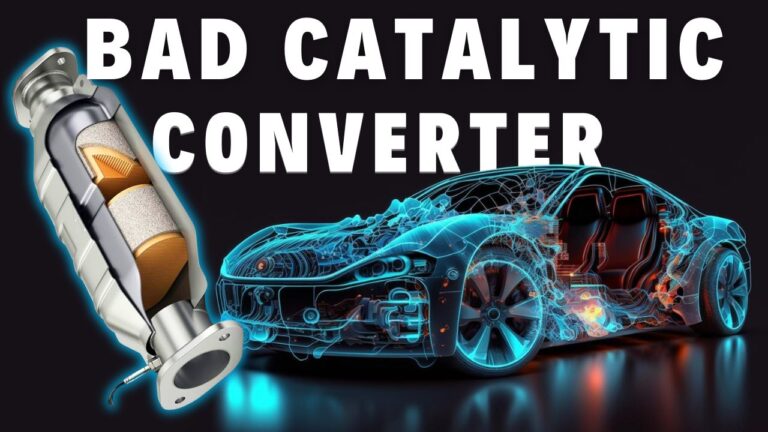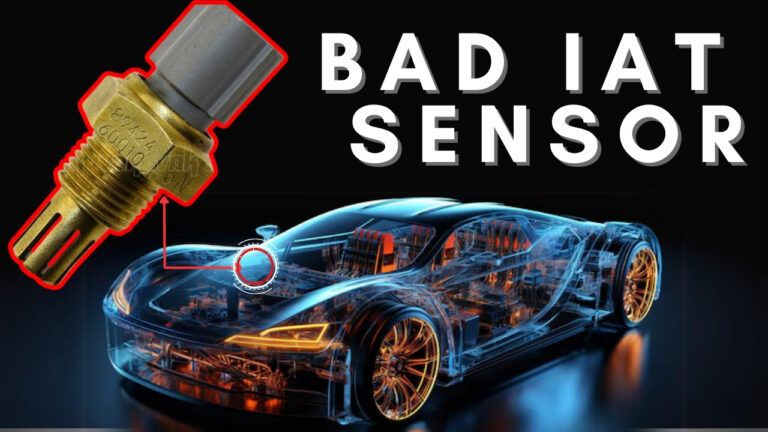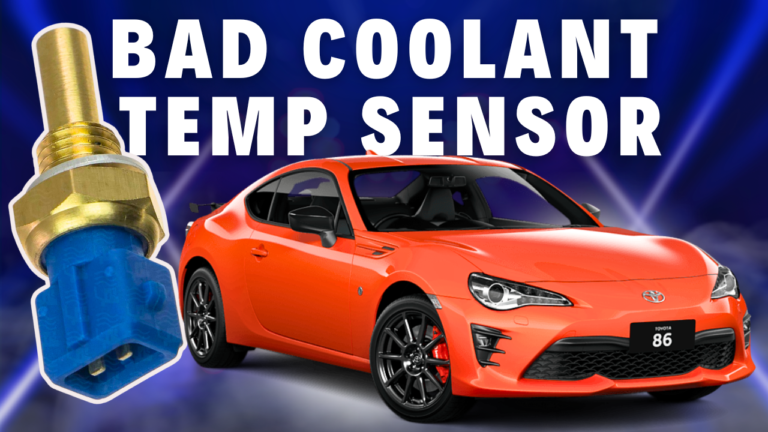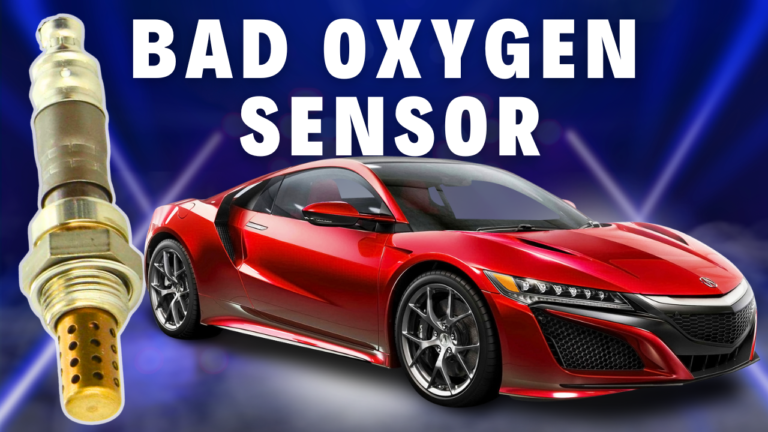What is Fuel Regulator?
The fuel pressure regulator is responsible for maintaining the optimal pressure within the fuel system. By ensuring that the correct pressure is maintained, the regulator enables the injectors to release the appropriate amount of fuel to achieve the ideal air-fuel mixture ratio.
Without a properly functioning fuel regulator, the engine may experience issues such as hesitation, misfires, or stalling due to an inconsistent or incorrect fuel supply.
Where Is the Fuel Regulator Located?
The fuel pressure regulator can typically be found at one end of the fuel rail in systems that include a return feed for fuel. In return less systems, the regulator is integrated into the fuel tank near the pump, making it easier to access. [1]

Bad Fuel Regulator Symptoms
A malfunctioning Fuel Regulator can manifest in various symptoms, indicating potential issues with the vehicle’s performance:
- Rich or Lean Fuel Mixture: A malfunctioning fuel pressure regulator may cause the engine to run with either a rich or lean fuel mixture. This imbalance can lead to symptoms such as rough idling, stalling, or poor engine performance. It may trigger trouble codes like P0171 or P0172 when scanned with OBD-II.
- Fuel Leaks: A faulty fuel regulator can result in fuel leaks around the regulator housing or fuel rail. This occurs due to the high fuel pressure in the system caused by the faulty fuel regulator.
In case of vacuum fuel regulator leak is observed in the vacuum port. If fuel is observed in the vacuum line or leaking from the vacuum port, it indicates a torn diaphragm in the regulator. - Black Smoke from Exhaust: An excessively rich fuel mixture caused by a faulty fuel regulator can lead to black smoke emissions from the exhaust. This indicates incomplete combustion of fuel and may also result in reduced fuel efficiency. Additionally, it may cause carbon blockage on your catalytic converter and oxygen sensors.
- Check Engine Light: A malfunctioning fuel pressure regulator may trigger the check engine light to illuminate on the dashboard. This can occur due to fault codes related to fuel system issues detected by the engine control unit (ECU). The list of fault codes related to fuel regulators is covered in this blog.
- Engine stalling or Hesitation: Erratic fuel pressure regulation can cause engine stalling, hesitation, or surging during acceleration. This occurs when the engine receives an inconsistent fuel supply, affecting its ability to maintain a steady idle or respond smoothly to throttle input.
- Hard Start or No Start: Continuing to drive with a bad fuel regulator with excess fuel supply over time can cause carbon buildup on the spark plugs. This buildup prevents the spark plugs from igniting the air-fuel mixture, resulting in difficulty starting the engine or a complete inability to start it.
- Reduced Engine Performance: Overall reduction in engine performance, including decreased power output and sluggish acceleration, can be indicative of a faulty fuel pressure regulator. This symptom is often accompanied by other signs of fuel system dysfunction.
Common Fuel Regulator fault codes
The activated trouble codes can vary depending on the type of fuel regulator installed in the vehicle. For example, vehicles equipped with a vacuum regulator may trigger different fault codes compared to those equipped with an electronic regulator. Therefore, it’s essential to consider the specific type of fuel regulator when diagnosing and troubleshooting related issues.
Here is a list of common fault codes associated with a bad fuel regulator to look for if your check engine light has turned on:
For Vacuum Regulator:
- P0170: Fuel Trim Malfunction (Bank 1)
- P0171: System Too Lean (Bank 1)
- P0172: System Too Rich (Bank 1)
- P0173: Fuel Trim Malfunction (Bank 2)
- P0174: System Too Lean (Bank 2)
- P0175: System Too Rich (Bank 2)
For Electronic Regulator:
- P0001 : Fuel Volume Regulator Control Circuit/Open
- P0002 : Fuel Volume Regulator Control Circuit Range/Performance
- P0003 : Fuel Volume Regulator Control Circuit Low
- P0004 : Fuel Volume Regulator Control Circuit High
- P0087: Fuel Rail/System Pressure Too Low
- P0088: Fuel Rail/System Pressure Too High
- P0089: Fuel Pressure Regulator 1 Performance
- P0090: Fuel Pressure Regulator 1 Control Circuit
- P0091: Fuel Pressure Regulator 1 Control Circuit Low
- P0092: Fuel Pressure Regulator 1 Control Circuit High
What Causes the Malfunction of Fuel Regulator ?
Causes of a Faulty Fuel Regulator
- Internal Wear or Damage: Over time, the internal components of the fuel regulator, such as the diaphragm or spring, may wear out or become damaged, affecting its ability to regulate fuel pressure effectively.
- Contaminated Fuel: Presence of debris, water, or other contaminants in the fuel system can clog the fuel regulator or cause damage to its components, leading to malfunction.
- Excessive Heat or Vibration: The location of the fuel regulator within the engine bay exposes it to high temperatures and vibrations. Prolonged exposure to extreme heat or continuous vibrations can weaken the regulator’s construction and affect its reliability.
- Electrical Issues (for Electronic Regulators): Electronic fuel regulators may experience malfunctions due to issues such as wiring faults, solenoid failures, or problems with the control module.
- Manufacturing Defects: In some cases, fuel regulators may have manufacturing defects or quality control issues that can lead to premature failure or malfunction.
How To Test Fuel Regulator?
Testing the Fuel Regulator can be done using following method:
- Check the fuel pressure: Testing a fuel regulator begins with checking the fuel pressure at the fuel rail. The fuel rail is a metal pipe that connects the injectors to the fuel pump.
- Locate Fuel Rail and Test Port: Find the fuel rail in your vehicle’s engine bay. This metal pipe connects the fuel injectors to the fuel pump. Look for the test port on the fuel rail; it’s a small valve-like fitting where you’ll attach the fuel pressure gauge.
- Prepare Fuel Pressure Gauge: Ensure you have a fuel pressure gauge with the necessary adapters to fit the test port. You may need to refer to your vehicle’s manual or consult an automotive store to ensure you have the correct equipment.
- Relieve Fuel Pressure: Before attaching the gauge, relieve any built-up pressure in the fuel system to prevent fuel spray. This can typically be done by removing the fuel pump fuse or relay and then cranking the engine a few times.
- Attach Fuel Pressure Gauge: Once the pressure is relieved, attach the fuel pressure gauge to the test port on the fuel rail. Ensure it’s securely connected to prevent leaks during testing.
- Turn Ignition On: Turn the ignition key to the “ON” position without starting the engine. This activates the fuel pump and allows you to measure the pressure in the fuel system.
- Read Pressure: Look at the reading on the fuel pressure gauge. It should fall within the specified range for your vehicle, which can vary depending on the make and model.
- Locate Fuel Rail and Test Port: Find the fuel rail in your vehicle’s engine bay. This metal pipe connects the fuel injectors to the fuel pump. Look for the test port on the fuel rail; it’s a small valve-like fitting where you’ll attach the fuel pressure gauge.
Other Issues That Exhibit Similar Symptoms as a Bad Fuel Regulator
When a car exhibits the symptoms mentioned above, and the Fuel Regulator has been checked and found to be in working order but the issue persists, it’s essential to inspect the other components of the fuel delivering system.
- Faulty Fuel Pump: A failing fuel pump can lead to inadequate fuel pressure, resulting in symptoms such as hard starting, hesitation, and engine misfires.
- Clogged Fuel Filter: A clogged fuel filter can obstruct the flow of fuel to the engine, resulting in reduced fuel pressure and poor engine performance. Symptoms may overlap with those of a failing fuel regulator, making it important to check and replace the fuel filter if necessary.
- Dirty Fuel Injectors: Dirty or clogged fuel injectors can disrupt the fuel spray pattern, leading to engine performance issues such as rough running, hesitation, and reduced fuel efficiency.




